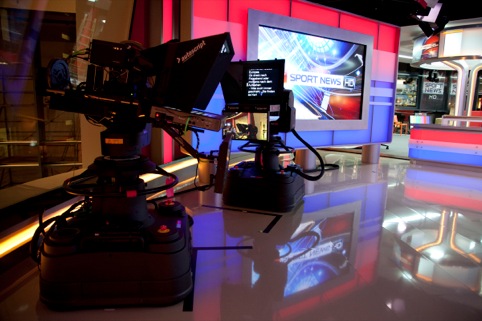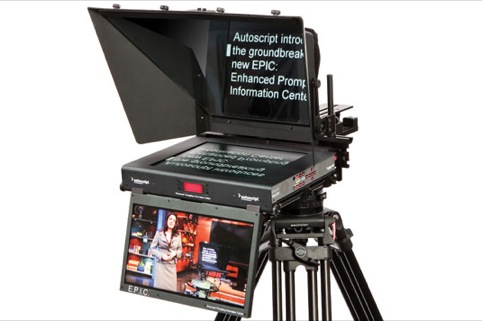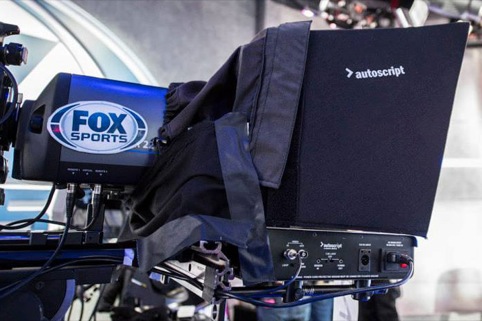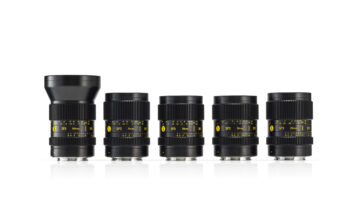
Teleprompters have been a silent support for speakers for decades, playing a vital role in everything from high profile political campaigning to cutting edge TV news productions. Prompting solutions, so widely used in the broadcast world, are viewed as staple pieces of equipment both inside and outside the studio. At the invention stages, the very first prompting systems consisted of connecting cue cards on a motorised scroll. Fast-forward half a century and teleprompting has been transformed into an invaluable speechmaking and presenting tool. This year marks thirty years in the business for Autoscript, which manufactures and provides teleprompters to TV and film production companies around the globe. The company has shipped more than 9000 software systems, and many more on camera teleprompter units, since its solutions were introduced to the market three decades ago.
Early days
The earliest systems that Autoscript designed and introduced were made up of simple script beds with an overhead closed circuit camera. The script was re-typed onto a narrow roll of paper and a simple drive system enabled an operator to control the speed that the script advanced beneath the CCTV camera lens. It was such a basic system that any small script corrections had to be made by hand, deletions were spliced out of the paper roll, or significant additions re-typed and literally glued back in.
The original news version had an extended bed that allowed whole script pages to be displayed, and changes to the running order were made by physically altering the order of the pages on the script bed. It may seem an unsophisticated approach compared to modern systems, but this version was the first that allowed a video image of the prompt text to be distributed to every on-camera prompter. Any script changes could be made in a single place and by default all the prompters were in sync.
This was a huge advance on the previous paper systems, where each studio camera with a prompter rig had its own unique copy of the script. These were all scrolled, hopefully in synchronisation, by a master control. Any alterations had to be made on each individual script viewer, which was inevitably time-consuming and demanded the necessary manpower resource. For example, if more than two cameras had prompters, two operators were required.
Transformations in technology
Technological advancements have completely transformed the way the broadcast industry works. During the last thirty years there have been numerous step changes in technology which have had a dramatic impact on all types of television equipment, teleprompting has been no exception.

The single most important transformation in this generation of teleprompters came with the development of the microchip. Prompting became paperless and able to operate far more efficiently. No more re-typing scripts, as these could now easily be imported, and instant clean script changes made where necessary. The appropriate software, such as Windows, allowed a huge selection of international fonts to take prompting into many more regions. Interfacing to electronic newsroom systems enabled the presenter to see the most up to date script, sometimes before it had even been distributed to the newsroom.
One of the biggest breakthrough systems from Autoscript was its first digital prompter, Simplicity 2, a pre-DOS dedicated machine that provided dual screen editing. The major advantage of this system was it allowed changes to be made anywhere in the script without disturbing the prompter text. It was also the first device to be integrated into electronic newsrooms, with its unique ability to automatically accept any running order or text changes made in the newsroom. The Simplicity 2 machines ran news prompting interfaced to Basys at both the BBC and ITN for many years and only became obsolete following the introduction of Windows. Microsoft’s game-changing software gave rise to the development of what went on to be the world’s best-selling digital prompter, the WinPlus range of Autoscript prompters.
A black art?
While there have been huge advances in technology, notably with the power of computing and the development of flat panel screens, just as importantly there has been a psychological change in the way prompting is perceived. Historically, it was considered to be something of a black art, a system running in the background that was considered to be a means of ‘cheating’. In fact nothing could be further from the truth. Teleprompting is now recognised as one of the greatest production tools, cutting costs across the board, with less rehearsal time required, fewer retakes and a reduction in editing time.
Without today’s prompting solutions, the current typical production schedule of many programmes would be impossible to achieve. The systems have also had a substantial impact on the performance of today’s presenters, enabling the professionals to concentrate solely on their presentation, rather than trying to memorise words and a variety of moves.
While teleprompting has significantly changed the way broadcasters and presenters work, the manufacturers have no influence on the development of other new camera equipment or techniques. Rather they have had to follow and respond to various industry trends from the introduction of HD and 3D lightweight cameras, to miniature remote pan and tilt heads. One of the current trends has been influenced by the popularity of tablet computers, which have brought affordable prompting systems to a far wider audience.
Pocket prompters
Tablets have only had a marginal effect on professional prompting applications due to a number of limitations, however they have given personal users their own pocket prompters. Tablet computers can be extremely useful for standby applications such as documentary use, news intros and other applications where an operator may not be able to obtain or transport a full prompting kit. The operating systems are upgrading regularly and as new features are being added, tablets could become far more versatile in the future.
There are also many prompting applications for iDevices but, again, few are suitable for professional use. One unique and eminently useable system is provided by Autoscript’s WinPlus news prompting software. This can send selected scripts automatically to a remote iDevice prompter anywhere in the world, using wifi and file transfer protocol. In particular, it has been well tested with the picoPrompt app for iDevices in many challenging locations where it would be impossible to take a full prompting system.
Smaller, lighter, brighter
So what does the future hold for teleprompting technology? In an ideal world, the perfect prompter enables the presenter to look straight at the viewer. So the prompting monitor could be mounted just above the lens to provide the text in a large font. This can then be read with a ‘cheated’ eye line into the lens, or the text could be reflected across the lens by a piece of glass or perspex to give a ‘straight into the lens’ eye line.

The eternal problem is how to achieve this without the on-camera hardware. Regardless of how sophisticated the software becomes or the slickness of the speed control, there will always be the basic challenge of the prompter being physically attached on to the camera. There could be a clear OLED or TFT screen for the lens to shoot through, removing the need for a hood and glass, head-up displays incorporated into spectacles, or even video contact lenses. However, there is nothing on the horizon that looks ready to change the current implementation. In the future we are likely to see smaller, lighter, brighter solutions, but still using conventional technology.
Teleprompting has undergone so many dramatic changes in the last thirty years, from scrolls of paper, to the latest digital solutions. These are now standard pieces of equipment in every area of production and there is no doubt that teleprompting will remain a common fixture in studios for the next three decades. Whatever the next generation of prompters look like, they will continue to enhance the performance of presenters and improve broadcasters’ bottom line for years to come.







